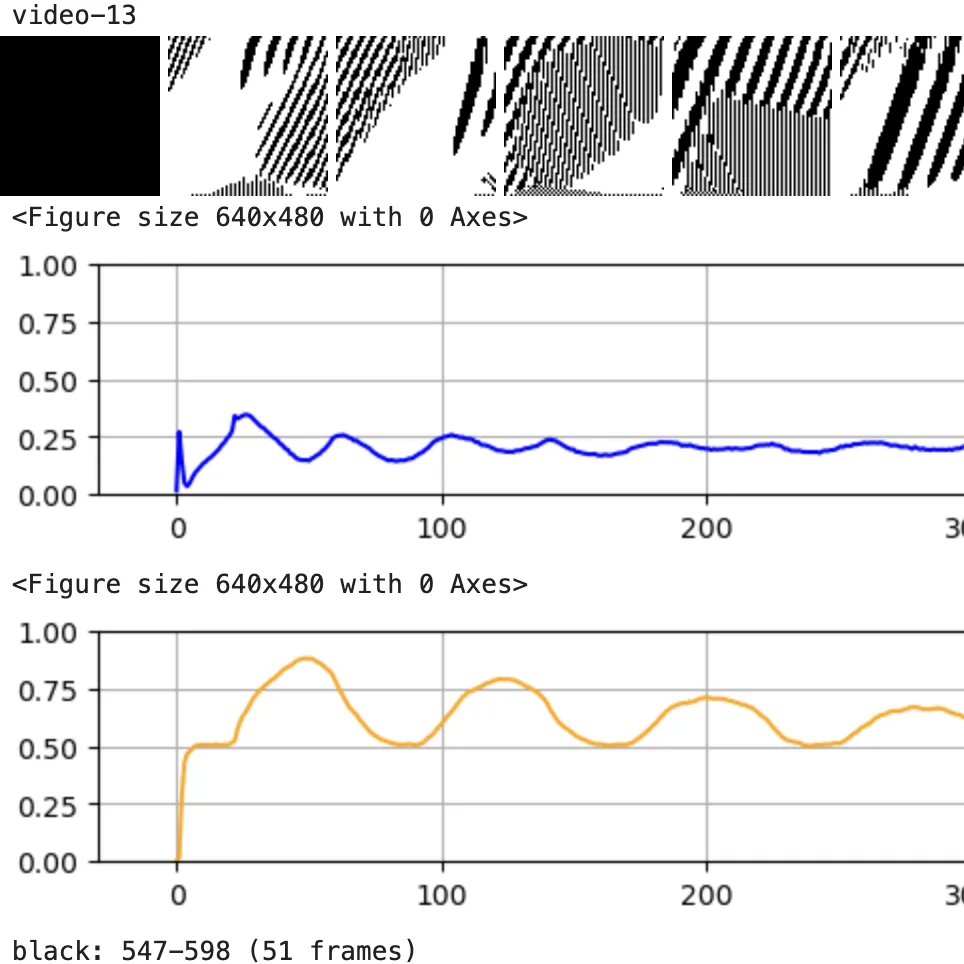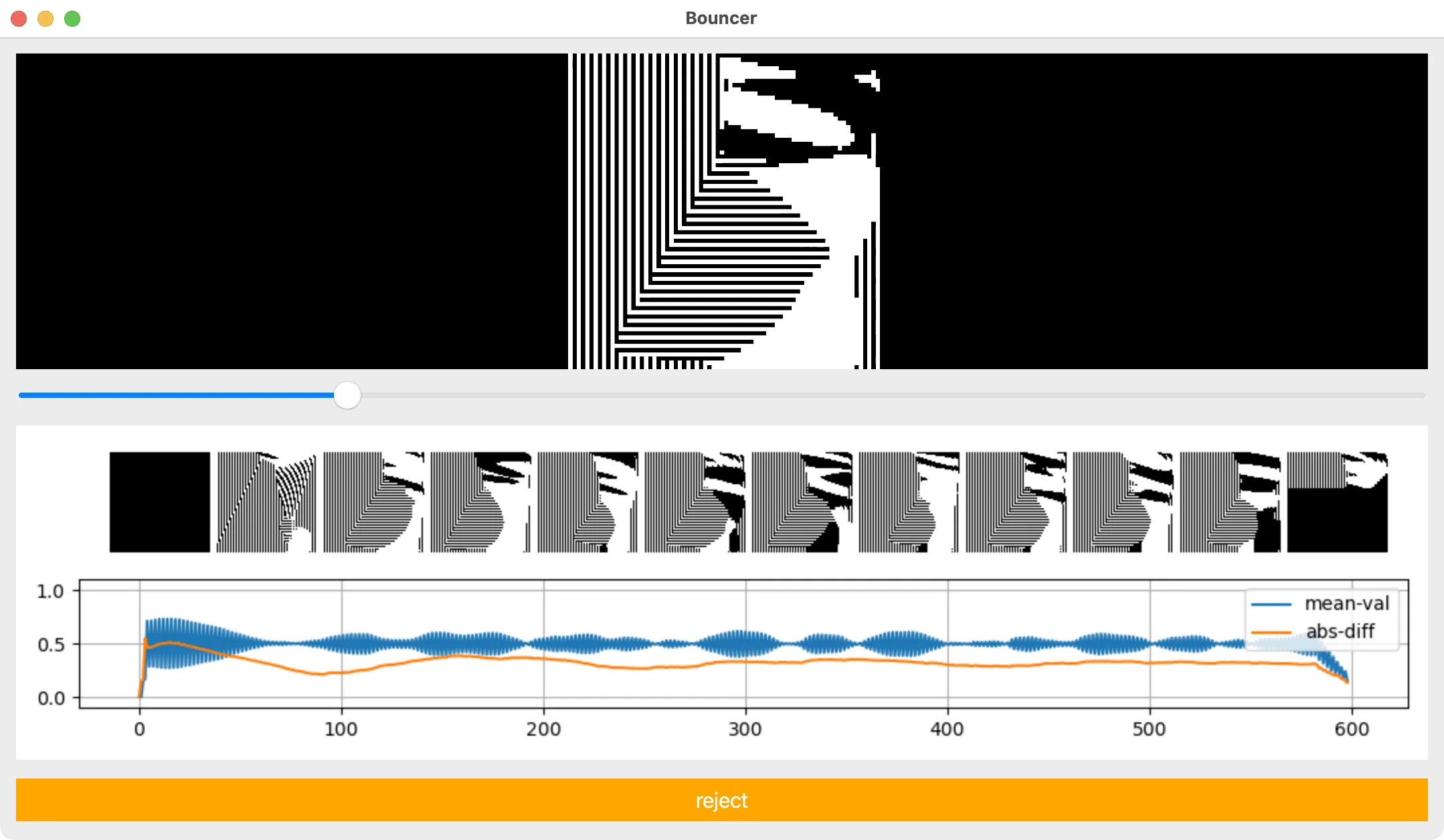Finding configurations for Filter Feedback that produce interesting results is time-consuming because generally only a tiny fraction of all randomly generated variants ends up being visually pleasing. Common problems are:
- Configurations are too unstable; they descend into infinity (resulting in a completely black or white screen) too fast
- Results contain strobe-like flickering, oscillating between inverted states
- There is too little movement overall


